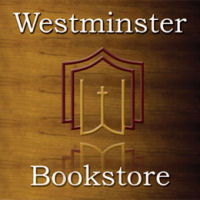Kruger’s Introduction
Kruger has written this book, not to defend a model of canonicity, per se (as readers may recall he did in Canon Revisited), but to answer the more basic question of “why is there a New Testament at all?” (17). In this book, Kruger is out to show the problems with the extrinsic model of the canon (which views the canon as, “to some degree, imposed upon the Christian faith” by outside ecclesiastical concerns in the fourth century). Kruger says this extrinsic view is the dominant model of canon in academia today. As its alternative, he presents the intrinsic model of canon, which views the canon as something that “is not …imposed from the outside but develops more organically from within the early Christian religion itself” (21). He summarizes the extrinsic model by its 5 major tenets, which he spends one chapter each in the book addressing. These are the five tenets of the extrinsic view:
1. We must make a sharp distinction between Scripture and canon.
2. There was nothing in earliest Christianity that might have led to a canon.
3. Early Christians were averse to written documents.
4. The NT authors were unaware of their own authority.
5. The NT books were first regarded as Scripture at the end of the second century.
Kruger’s book is structured into five chapters, each intended to deal with one of the above five tenets of the extrinsic model. In the end, he does hope readers will see the problems with the extrinsic model and see that the facts seem to line up with aspects of both the intrinsic model and also the extrinsic. He does not see the two models as mutually exclusive but as capable of harmonization. It is those who claim the extrinsic model is the only viable model of canon on whom Kruger sets his sights, as he sees much to be appreciated in both models.
Chapter 1: The Definition of Canon
Kruger agrees with Brevard Childs: “Much of the present confusion over the problem of canon turns on the failure to reach an agreement regarding the terminology” (27). This chapter is dedicated to finding a helpful definition of canon. Kruger narrows the possible definitions of canon down to three, and he finds each of them on their own to be insufficient apart from the others. They are:
1. The Exclusive definition: “Canon as a fixed, final and closed list of books” (29). This view puts the canon’s formation in the fourth century.
2. The Functional definition: “The term canon need not be restricted to a final, closed list but can ‘encompass the entire process by which the formation of the church’s sacred writings took place.’” (34). This view puts the canon’s formation in the second century.
3. The Ontological definition: Canon as defined by God. “What the canon is in and of itself, namely the authoritative books that God gave his corporate church” (40). This view sees the canon as existing as soon as it is written.
Kruger says that all three of these views complement each other because they each encompass a particular "phase" of the formation of the canon. He calls this a “multidimensional approach to the definition of canon” (43). To appreciate exactly how he sees them complementing each other, the following quote is helpful:
When the three definitions are viewed together they nicely capture the entire flow of canonical history: (1) the canonical books are written with divine authority; —> (2) the books are recognized and used as Scripture by early Christians; —> (3) the church reaches a consensus around these books. The fact that these three definitions are linked together in such a natural chronological order reminds us that the story of the canon is indeed a process; and therefore it should not be artificially restricted to one moment in time. Put differently, the story of the canon is organic (43).
Kruger argues that this “multidimensional approach” allows scholars to understand the canon in a way that is more in keeping with historic Christianity while at the same time appreciating the most helpful aspects of all three definitions.




No comments:
Post a Comment
Before posting please read our Comment Policy here.
Think hard about this: the world is watching!